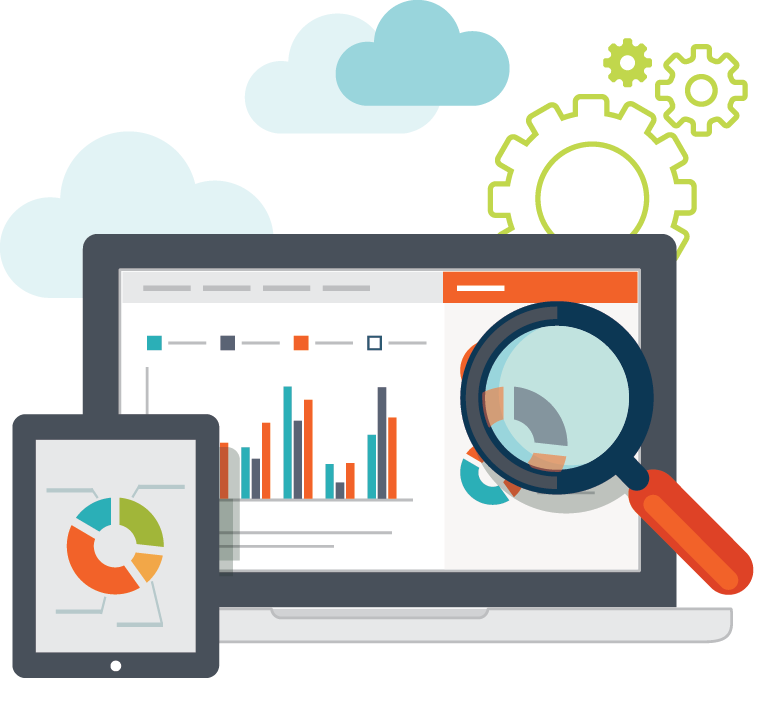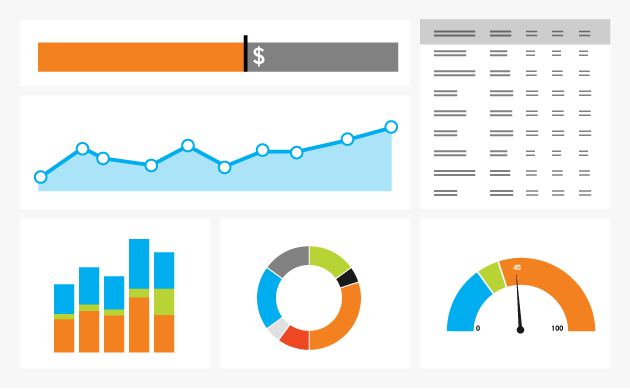Whether you're a bootstrapped startup or a well-known company, you likely have one (or more) people on your team in charge of analytics. These are the people who wrangle all that big data into meaningful insights that help propel the company forward. They're the ones who make sense of all the input arriving from all the disparate tools and filter it into discussions, split testing ideas, sales hooks and other angles that help improve conversion rates.
So if they're so crucial, why am I suggesting you dump them?
Because if they are the all-encompassing heart of data at your business, they're doing more harm than good in the long run.
Now before you grab your digital torches and pitchforks, hear me out. I want to preface this article by saying that yes, analytics people are valuable – critical, even – to your business' success. But no matter how varied their experiences or how unique their perspective, all of the insights you're moving on and data you're collecting are still being filtered by one or even a handful of people.
On the surface, there's no harm in that.
It's when that person leaves, or changes departments, or gets promoted that you start to run into problems. Suddenly, this person who was the linchpin of the entire analytics action team has left everyone else scrambling to pull and/or make sense of the numbers and charts.
On the opposite spectrum, there's the “analytics fortress”. It's virtually impregnable and understandable only for a select few. There are whispers and rumors about the treasure trove of data it contains, but few have ever seen it first-hand. And while that may seem like rock-solid job security on the surface, it's a giant red flag for the organization doing the hiring. Remember, they want the system to be set up so that it's easy to understand, pull from and analyze. They won't hesitate to hire someone who can help them re-configure it to be more open, accessible and cross-functional.
Getting a better handle on your analytics starts with putting the information out there and letting your various teams, departments and decision makers brainstorm the possibilities while gradually guiding them on integrating more of the data into their everyday tasks. One step at a time, and gradually, everyone becomes proficient.
But We're So Far Behind!

Did you know that analytics, as a field of study, is less than five years old? That means it's still at the proverbial not-eating-paste stage of its life. Because there are so many advancements being made in the field and new tools being developed, it's easy to think that you're falling further and further behind. But the fact is, with the right dashboard and the right information at your fingertips, you can make course corrections in real-time for the betterment of the campaign or project as a whole.
What this kind of new-found power will do, however, is put a big dollop of transparency on everyone. Mistakes (and successes) will be visible. Scrutiny and the sizing up of campaign results will happen. But nobody's perfect and everyone's learning. You can't afford to let your mistakes hold you back, but by the same token, you can't afford to rest on your laurels either. Always moving forward. That's what it means to be data driven.
The New Data Wrangler

Every business wants someone with a brilliant analytical mind to swoop in, corral the data and turn it into a nice, neat and meaningful slideshow where everyone gets to bask in hefty sales figures and pretty charts. In a perfect world the numbers speak for themselves and the subsequent actions obvious.
Sadly, it doesn't work that way. And companies who forge ahead with this mindset are terribly misguided. But because transforming into a data-driven company is such a new process, it can be overwhelming to know where to start or even how to go about it. You may already even have people in place, such as those who oversee proper compliance, those who fix broken or duplicate data, or even those who build monetization models. But data-driven isn't a person so much as a way of doing business.
That means you want your company to have a strategic, forward-thinking mindset. It's very much a cultural shift. People should easily be able to reference and use the information collected to make improvements and add value to the customer experience. That means being able to make decisions that are practical for today as well as far-reaching for tomorrow.
Make It a Group Effort

The fact is, your campaigns will always improve over time whether you've got one person running it or 100. Why pin all your insights on a single person when you can make analytics a group effort instead? Have a process in place that turns your company from reactive to proactive when it comes to data-driven insights. Oftentimes, there's a pervasive thought throughout companies that analytics “is not my job” or that the only time it's useful is determining the success or failure of a campaign after the fact.
If data isn't the foundation of every marketing decision made by each and every person, then you're not truly a data-driven company. Teach others how to use the data not just when it suits them, but as part of the overall company culture – in planning, prioritizing, during the progress of a campaign, and throughout optimization up to launch and beyond. Above all, analytics should never be used to tout one person's idea as better than another's. Through all this data, everyone is learning whether something works, whether it doesn't, or whether it merits more study.
Every single piece of information is a potential lesson.
Action Steps for Becoming a More Data-Driven Company
So now that we know what's needed, how do we turn this information into action? Here are a few steps to integrating a more data-driven flow into your workplace:
- Set your data free – Let everyone from key decision makers to operational leads, partners, suppliers and vendors have access to relevant information
- Make analytics for everyone – Connect all your sources so that every department sees the big picture and can drill down for more details
- Let people create their own insights – You'd be amazed at the ideas and perspectives that percolate to the top when people have the freedom to make their own analyses and insights based on the situation presented
- De-centralize decision making – Let things be done openly. Test, track, monitor and report. Don't require lots of needless hoop-jumping just to try out some ideas.
- Rely on systems that everyone can use, not a black box configuration that is recreated each year by a new analytics lead
Remember, analytics is going to be new to many, many people. So it's understandable that there would be some uncertainty or outright trepidation in getting accustomed to it. Furthermore, company culture shifts don't happen overnight, so gradually easing into this new form of doing business helps ensure that everyone is on the same page and understands what's expected of them as it relates to their role in moving the company forward using data insights.
With that being said, however, it's always a good idea to learn from those who have successfully migrated over to a more data-driven mindset. Has your company embraced its data-driven roots? How did the process go? What parts were easiest to get people acclimated to and where did you struggle? Share your insights with us in the comments below!
About the Author: Sherice Jacob helps business owners improve website design and increase conversion rates through compelling copywriting, user-friendly design and smart analytics analysis. Learn more at iElectrify.com and download your free web copy tune-up and conversion checklist today!
No comments:
Post a Comment